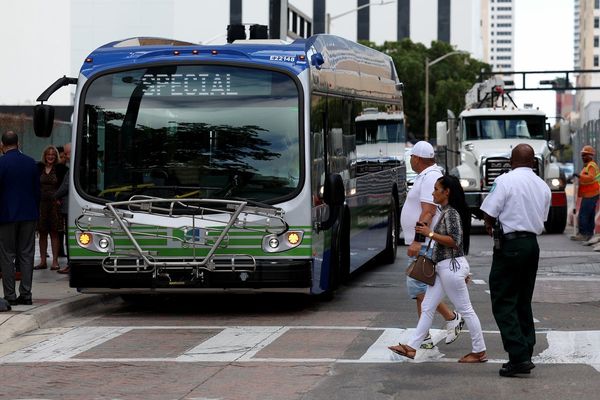
This new tyre is the Pirelli P Zero E – an electric vehicle-only set of rubber specifically designed with “55% bio-based and recycled materials”. With a host of other improvements as well, I went to Spain to see what the tyre had to offer.
The first drive on this tyre, from Barcelona airport to Sitges in an Audi Q8 e-tron, was surprisingly quiet. Of course engine noise is non-existent with an electric car, leaving just the sound of the tyres. Or so you’d think.
Lower tyre noise is one of the selling points of the P Zero E, and it certainly is quiet. The tyre noise was barely noticeable, and were it not for the wind noise you’d have been forgiven for not realising you were driving.
This lack of sound leaves your brain free to focus on the other aspects of driving – be it the way the car moves through the corners, the sights around the car, or even the conversation you’re having.
It was these sights that took a lot of the attention on that initial drive.
The road from Barcelona airport to Sitges is the quintessential Grand Tourer fare – a twisting road carved into the mountainside, clinging to the terrain and offering views to one side of a glittering sea punctuated by yachts and harbours and remnants of industry past on the other. A road almost custom-made for sports cars ferrying their owners to and from dinner. The car and tyres handled the twists and turns of the road with competence, never once threatening to do anything other than provide a smooth journey.
With the drive to the hotel in the books and first impressions created, we headed to Vilanova to watch the America’s Cup regatta from the open sea.
The America’s Cup spent some time in F1 news earlier this year, as the FIA released TD45 in June 2023 – a directive that allows teams to run special projects divisions, but states that any Intellectual Property gained from them (and used by F1 teams) must be accounted for within the cost cap.
While the connection between Pirelli, a tyre manufacturer, and the materials a boat is made from isn’t as obvious, the similarities between boat and car haven’t gone unnoticed by F1 teams.

Mercedes, through sponsor Ineos, have worked alongside the British America’s Cup team since 2019, while Red Bull are a sponsor of the Swiss entry.
Seeing the boats up close, it’s easy to understand why F1 teams would want to send some of their people to work on them as a cost cap workaround. Each one is a work of sporting art, custom-made to slice through air and water with the minimum of friction – much like the F1 cars these personnel supposedly don’t work on. While the pitch, yaw, and turning angles may all be slightly more exaggerated in sailing than in F1 there’s still a lot of similarities, and a lot of insight to be gained.
Alessandro Franceschetti, Head of Structural Engineering for the Luna Rossa Prada Pirelli team, took us through some of the materials the boats are made from. Again like F1, the boats are made from a mixture of materials – carbon fibre is naturally a large part, with aluminium in a honeycomb structure also a main feature of both boat and car. Speed and strength are the order of the day and watching the boats as they turn, pick up speed and cut through the water, they look just like aquatic F1 cars.
The parallels don’t stop at the vehicles though.
The America’s Cup motto is that there are no other positions – you’re first or you’re nothing. It’s a mantra we’ve heard many versions of before (Ricky Bobby’s most likely springs to mind) and, like so many other parts of the crossover between F1 and yachts, it makes complete sense. Nobody who reaches the pinnacle of their sport is happy finishing second or third. Sportspeople compete for wins, not entries, and nowhere is this more true than in the Americas Cup.
While the winner taking the spoils isn’t a unique concept, it’s taken to the extreme in the America’s Cup. The winner of the event is allowed to pick everything from the date of the next event, the location, and even the regulations.
There are of course certain limitations that teams have to abide by with these regulations but, for the most part, they’re free to decide the design as they please. Boats can completely change from one event to the next, and often do. Of course all teams have to play by the same rules, but it would be like Red Bull deciding the rules by which every other team has to abide by.

The boats themselves act very similarly to F1 cars. Unlike a typical boat, the idea for these yachts is that they rise out of the water, using the wind to support them as they use wings to keep contact with the sea. This means that the underside of the boat needs to act almost like an inverted F1 car, using the wings and air to cut an aerodynamic hole through the air to retain the lift.
Electric cars are part of the world’s attempt to become more eco-friendly, and Pirelli has made much of its push for sustainability – both in F1 and outside of it. It’s the “only tyre maker in the world to have scored three stars in the FIA’s Environmental Accreditation Programme”, and alongside F1 it’s pledged to be 100% carbon neutral by 2030. This sustainability push is evident in the road tyre as well, as it’s made from over 55% natural or recycled materials.
Thomas Hanel, Head of Innovation and Materials, proudly told us about how the tyre is made from products that don’t have any competition in the food chain – instead coming from recycled and bio-based materials like rice husk (an inedible byproduct of rice farming) and natural rubber. It’s an impressive feat, and means that each set avoids using 12kg of fossil-based and mineral materials compared to the same sized regular P Zero tyres.
The next day we drove to Idiada circuit – a mecca for people wanting to test their automotive innovations – to give the tyres a harder test. A proving ground for automotive brands, it even hosted the McLaren F1 team in 2013 as they tested parts ahead of the 2013 British Grand Prix (drivers Jenson Button and Sergio Perez would finish 13th and 20th respectively).
Being a highly-secretive test circuit for manufacturers to trial as-yet-unseen vehicles, we were made to turn in all phones and laptops (and anything else with a camera) at the gates. This provides some privacy for the testers and, while we did that, also gave Pirelli a chance to deflate the rear-left tyres on all the test cars to demonstrate their “RunForward” technology which allows the tyres to drive “up to 40km at up to 80 km/h” in case of a flat.
We took the cars on a 20-minute loop on the roads around the circuit and, amazingly, there was no noticeable impact on the driving – not in acceleration or noise or cornering. In fact the only indication that the tyre had even been deflated was when looking at it – a seriously impressive piece of engineering.
Leaving the open road behind we took the cars to the closed circuits at Idiada, where I started with a Mercedes EQE 350 on the dry handling circuit. A 2.2km track with elevation changes, chicanes and sweeping turns, it challenges the tyres to keep up with shifts in weight and cornering, all of which the P Zero E handled.

Erring on the side of understeer (likely helped by the EQE’s near 2.5ton heft) the tyres were predictable, communicating their grip through the corner and letting you know progressively when they were unhappy – exactly what you want in a tyre.
The wet track testing was next, and is a special feature of the Idiada circuit. Sprinklers dotted around the 1.5km track provide it with a 1mm film of water across the surface – not a lot at first blush, but enough to make an F1 team consider making the switch to inters.
As before though, the tyres felt good. They again erred on the side of understeer more than oversteer, but with some encouragement the rear could be persuaded to come and play (before the electronic systems kicked in at least). Testing with different cars provided similar results, and the tyres held on while being given more abuse than they should ever receive on the school run.
This final run was an interesting showcase of how the right tyres can inspire confidence in tricky conditions, and how even a road-going tyre can communicate grip from the wheels on the ground to the wheel in your hand.
Overall it was an interesting insight into the consumer-facing side of a brand so synonymous with motorsport, and a fascinating insight into how the only part of a car that touches the ground works.








